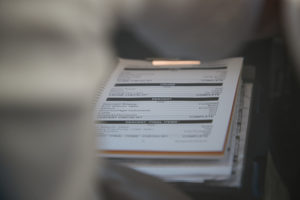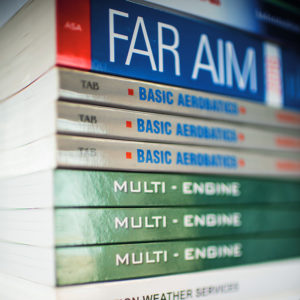A pre-flight checklist, mandated by the Federal Aviation Administration (FAA), serves as a critical safety tool for pilots. It ensures that all necessary tasks are completed before takeoff, reducing risks and enhancing flight reliability. The checklist includes flight deck inspection, flight controls, engine and system verification, safety equipment assessment, and external aircraft inspection. By carefully following these procedures, pilots can mitigate risks, protect passengers, and comply with aviation regulations.
 Why Pre-Flight Checklists Are Essential
Why Pre-Flight Checklists Are Essential
Safety remains the foundation of aviation. A structured checklist prevents oversights, ensuring that every critical step is executed before departure. By systematically addressing each component, pilots minimize human error and identify mechanical or technical faults before takeoff.
Beyond mechanical checks, pre-flight preparations also involve assessing external conditions such as weather, fuel requirements, and airport conditions. This proactive approach equips pilots with necessary information to anticipate and handle potential challenges during the flight.
In case of an in-flight emergency, pilots who have thoroughly completed a pre-flight checklist are better equipped to manage the citation, having already evaluated potential risks. Additionally, the checklist serves as an accountability record, documenting the completion of essential safety procedures in compliance with FAA regulations.
Key Components of a Pre-Flight Checklist
Pre-flight checklists are extensive and meticulously designed to leave no aspect of aircraft safety unchecked. Below are the fundamental elements covered:
Engine and Systems Check
Ensuring that the aircraft’s engine and systems are fully operational is paramount to flight safety. Pilots inspect and verify:
- Oil level and condition
- Fuel system (quantity, quality, and fuel lines)
- Engine components (intake, exhaust, spark plugs)
- Battery and electrical system
- Hydraulic system
- Control surfaces and linkages
- Landing gear and airframe
- Cooling and ventilation systems
- Ignition and magnetos
- Exhaust system
- Propeller and governor
Addressing any mechanical concerns before departure minimizes in-flight failures and ensures compliance with both FAA regulations and airline safety protocols.
Aircraft Configuration
Before takeoff, pilots must ensure that all aircraft systems and controls are correctly configured for optimal performance. Key configuration checks include:
- Flight controls
- Flaps and slats
- Landing gear
- Pitot-static system
- Instrument and avionics setup
- Cabin and seat adjustments
- Power settings
- Exterior inspections
- Fuel and weight balance
- Autopilot settings
- Safety equipment readiness
Proper configuration enhances aircraft efficiency, safety, and responsiveness during takeoff, flight, and landing.
Safety and Security Checks
Ensuring both operational safety and security readiness is a core responsibility of pilots. Pre-flight security measures include:
- Preventing unauthorized access to the aircraft
- Verifying control locks and secure door closures
- Checking safety equipment, seatbelts, and emergency procedures
- Inspecting emergency equipment (oxygen masks, fire extinguishers)
- Confirming fuel system security
- Testing radio and transponder functionality
- Reviewing aircraft documentation
While security threats are beyond the pilot’s control, adhering to these pre-flight security protocols strengthens overall in-flight preparedness.
Pre-Flight Planning
In addition to mechanical and security checks, pilots must engage in comprehensive flight planning, assessing factors that influence flight safety:
- Weather conditions: Meteorological assessments for departure, en route, and arrival airports
- Notice to Airmen (NOTAMs): Information on runway closures, airspace restrictions, and navigational hazards
- Flight route planning: Adjusting for air traffic, turbulence, or alternate landing sites
- Fuel requirements: Ensuring sufficient fuel reserves for contingencies
Thorough flight planning equips pilots with the necessary foresight to adapt to unforeseen circumstances, ensuring passenger and crew safety.
 Is a Pre-flight Checklist an FAA Requirement?
Is a Pre-flight Checklist an FAA Requirement?
Yes, the FAA mandates the use of written pre-flight checklists as part of their practical test standards. However, pilots are permitted to customize checklists based on their specific aircraft and operational needs. The FAA recommends consulting the aircraft’s Pilot Operating Handbook (POH) or Airplane Flight Manual (AFM) before making any modifications to ensure compliance with safety standards.
A pre-flight checklist is an indispensable component of safe aviation. By methodically verifying aircraft readiness, pilots minimize risks, enhance operational efficiency, and ensure regulatory compliance. Whether for commercial or private flights, adhering to a structured pre-flight procedure is essential for maintaining safety and professionalism in aviation.
Are you ready to become a superior pilot and begin your flight training? Contact admin@superiorflight.com for more information.
